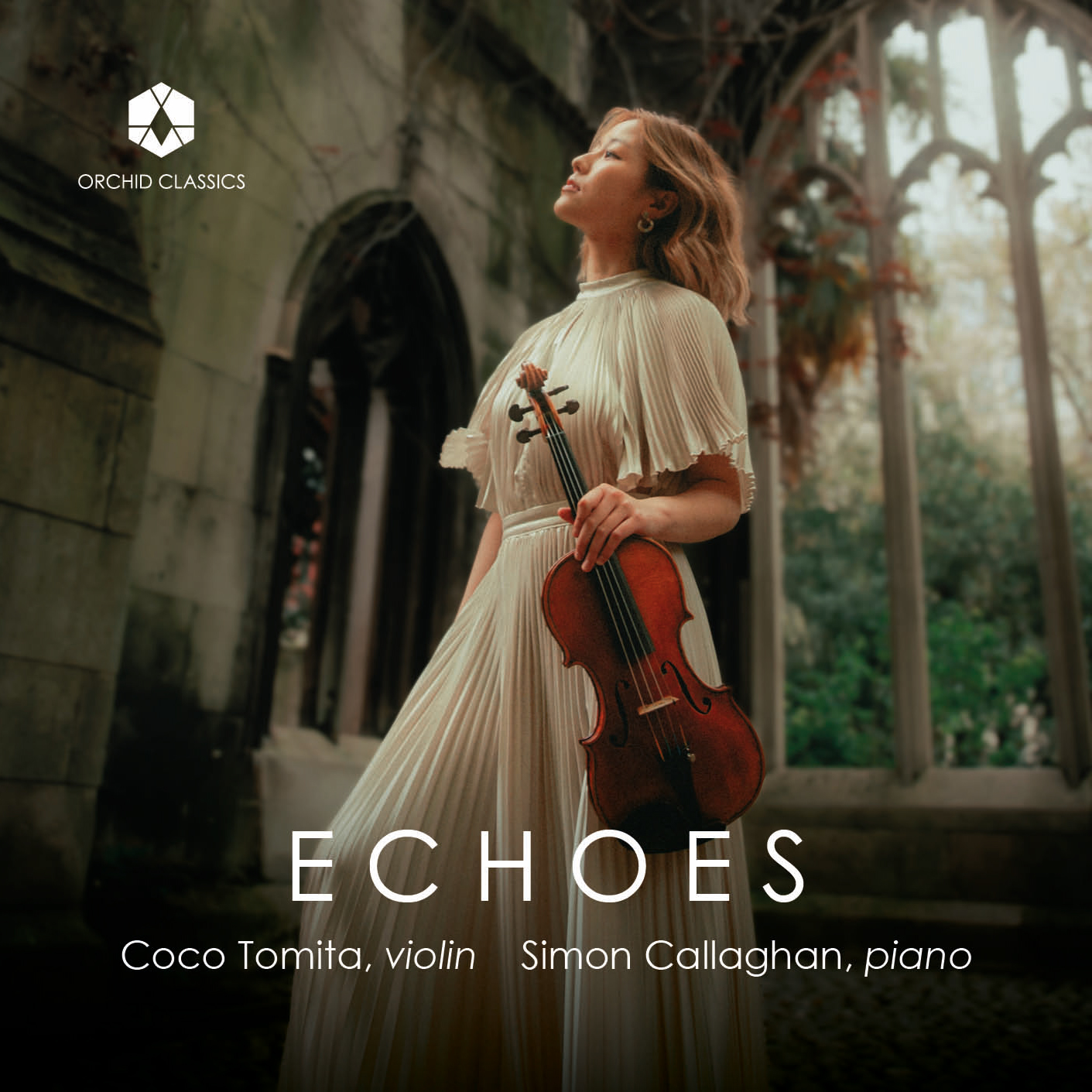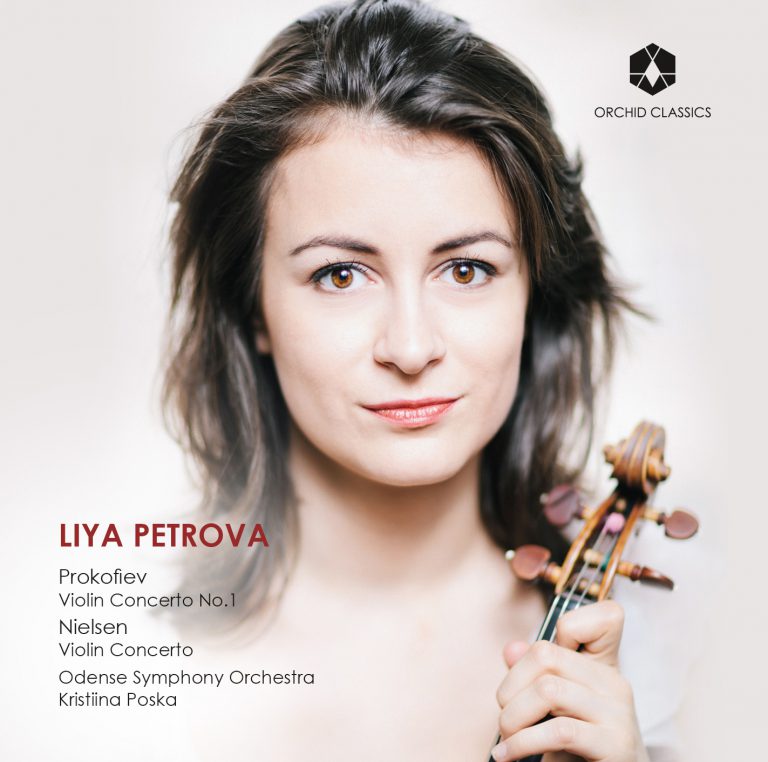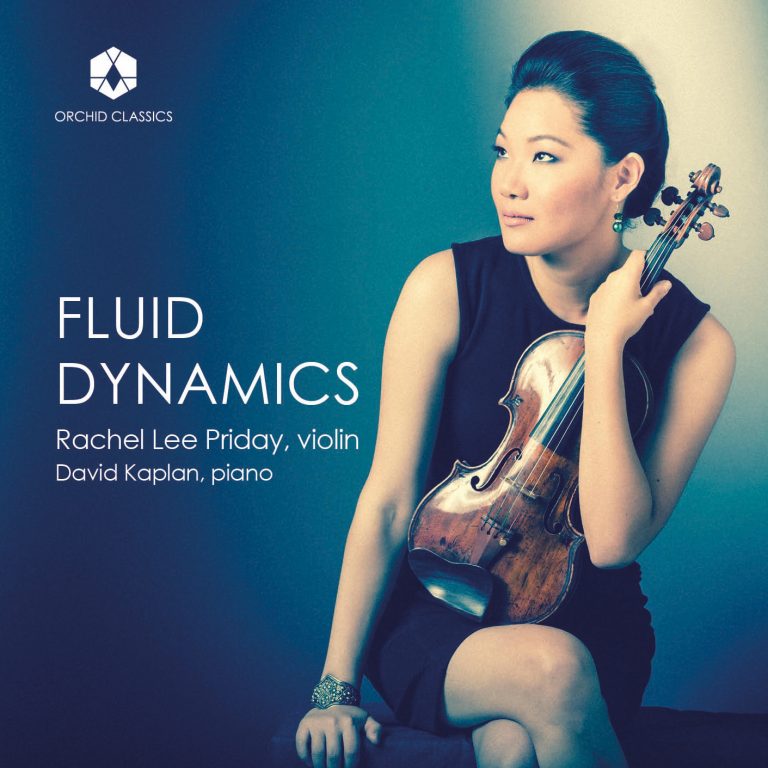Artist Led, Creatively Driven

ECHOES
Coco Tomita, violin
Simon Callaghan, piano
Yume Tomita, violin*
Release Date: Sept 13th
ORC100331
ECHOES
György Ligeti (1923-2006)
1. Baladă şi joc*
Leoš Janáček (1854-1928)
Violin Sonata, JW VII/7
2. Con moto
3. Ballada
4. Allegretto
5. Adagio
Sergei Prokofiev (1891-1953)
Violin Sonata No.1 in F minor, Op.80
6. Andante assai
7. Allegro brusco
8. Andante
9. Allegrissimo
Claude Debussy (1862-1918)
10. La file aus cheveux de lin
Transcription for violin and piano by Arthur Hartmann
George Enescu (1881-1955)
Impressions d’enfance, Op.28
11. Ménétrier
12. Vieux mediant
13. Ruisselet au fond du jardin
14. L’Oiseau en cage et le coucou au mur
15. Chanson pour bercer
16. Grillon
17. Lune à travers les vitres
18. Vent dans La cheminée
19. Tempête au dehors, dans la nuit
20. Lever de soleil
Traditional
21. Danny Boy*
Arranged for two violins by Alexsey Igudesman
Coco Tomita, violin
Simon Callaghan, piano
Yume Tomita, violin*
This album delves into the Eastern European landscapes through the intimate lens of violin chamber music. It features compositions by Enescu, Janáček, and Prokofiev, highlighting the region’s rich contribution to the classical music canon. The pieces reflect the stark realities of nations in turmoil, with the composers’ experiences of war and suffering influencing their creation. While some works portray the horror and terror of conflict, others offer solace in the sweet nostalgia of childhood memories. Each piece harbours a powerful and intimate narrative, weaving through realms of imagination, folklore, and emotional depth.
Coco Tomita
Baladă şi joc is an early work of György Ligeti, typical of his highly folk-influenced period. We hear the first violin beginning with a lilting melody flowing between modalities, with the second violin’s entry bringing an increase in harmonic intensity. The soulful, delicate textures cast the mind to the Concert Românesc (1951). The Allegro Vivace of the ensuing dance builds new relationships between the two violins, with a heartfelt playfulness echoing through the imitative textures. The offbeat pulsations invite a spirit of camaraderie between the players, sometimes almost with a tragic smile in the context of Ligeti’s life, creating a stark contrast with the tragedy he and his family faced during the Holocaust in 1944.
All the works on this album navigate the concept of artistic expression during wartime, and this is profoundly felt in the Violin Sonata (1914) by Leoš Janáček. The composer noted: “I could just about hear the sound of the steel clashing in my troubled head”. This is certainly felt in the resonant pulsating accompaniment piano figuration in the first movement which punctuates a heartfelt and soaring melody. A more impassioned theme then emerges, echoed by the solo violin, before anxiously fast rhythmic passages. Moments of harmonic integrity float into imitative passages, followed by a final Adagio question mark, with the violin phrases collapsing into introspective utterances.
A flowing Ballada gently arrives for the second movement, with longer phrase structures creating a sense of melodic purity, followed by a deeply felt second theme that invokes speech rhythms, bringing a simplicity and elegance. A quasi-scherzo is heard in the third movement, punctuated by serene moments of Meno mosso reflection. An unpredictable Adagio movement rounds off this sonata, with an octave melody in the piano that presents various harmonic question marks, before a Poco mosso theme in the violin in the bright key of E major provides a moment of respite and hope. This serenity does not last long, as the ‘feroce’ (fierce) figuration of fast low-register staccato notes brings the music back to reality. The final section of this sonata builds in intensity in the piano, with the violin punctuations leading to a Maestoso syllabic violin line with piano tremolandi that resonate with vibrant intensity. We return to the original Adagio for the coda, with fragmented gestures echoing into silence.
Composed for violinist David Oistrakh during the years 1938-1946, the Violin Sonata No.1 in F minor by Sergei Prokofiev is a work of fierce intensity and colour, exploring an incredibly wide variety of emotions and modes of expression. From the sinister utterances of the opening section of the first movement, heard over the deepest register of the piano, to the sardonic open strings of the second movement, contrasted with the angelic soaring melodies of the third movement, and the aggressive pizzicato chords of the finale, Prokofiev pushes the duo performers immensely in this work. The bell-like echoes of the opening lead the listener along to a passage that has become notorious for its description as ‘wind blowing through a graveyard’, punctuated by bitter low-register pizzicato ideas in the violin. There is a dark serenity to this section, possibly one of the most devastatingly beautiful passages in all of Prokofiev’s work. This atmosphere is shattered with brutal and sarcastic Allegro brusco, with piano and violin imitating each other with searing mockery. The deep irony of this movement communicates a deep wartime anguish, an emotion common to so many of the pieces on this album. A flowing Andante arrives, with deeply felt low melodic lines in the violin resonating under the piano figuration. A subdued trilling coda brings the listener inward again before the composer launches into the Allegrissimo of the fourth movement. The turbulence of this movement leads us to an echo of the ‘graveyard’ scene mentioned above. Calling this material back brings a degree of emphasis, colouring the sonata with intensely felt emotions of pain and anguish.
A moment of reprieve arrives as Debussy’s La Fille Aux Cheveux De Lin from his first book of Préludes for solo piano of 1909-1910, when the world was building up to the First World War of 1914-1918. Played by David Oistrakh as an encore to his 1972 recital at the Great Hall of Moscow Conservatory, this work presents a moment of light illuminating golden hair, conveyed by a cascading melody line.
Romanian composer George Enescu wrote his Impressions d’enfance in 1940, and these pieces serve as a collection of reminiscences and fragments curated in a sequence of ten movements. We hear a jaunty dotted character in the first piece Ménètrier or ‘Minstrel’ for solo violin which casts our mind back to the colours of the Ligeti heard at the opening of the album. An evocation of an Old Beggar soon arrives (Vieux mendiant), notated as ‘raucamente’ or ‘hoarse’ for the violinist, with expressive glissandi throughout. This pulls the listener forward to the murmuring stream at the bottom of the garden (Ruisselet au fond du jardin) in which the glassy harmonics of the violin echo around light and capricious piano writing. The fourth impression, L’Oiseau en cage et la coucou au mur (the bird in the cage and the cuckoo on the wall) presents a lamenting, trilling line heard almost independently of the chromatic and haunting piano. The fifth impression Chanson pour bercer (Lullaby) flows along with a unison violin and piano texture which eventually expands into a lilting armonized passage of great feeling. The insistent ticking of a cricket is now heard in Grillon creating a night scene that flows seamlessly into Lune à travers les vitres (Moonlight through the windows), which pulsates with romantic passion over dense and mature harmony. We hear a whirling double-stopped evocation of wind moving through the chimney (Vent dans la cheminée), which moves with such chromatic uncertainty that the piano entry for Tempête au dehors, dans la nuit (Storm outside, at night) seems to evoke a whole new tuning system. The flowing triplets of the violin line pull the rhythms along towards the sunrise (Lever de soleil), offering a final sense of arrival as all the creatures of the air and land emerge from slumber, evoked in a bright D major tonality.
Further relaxation of harmonic and dramatic tension comes in the form of Danny Boy, arranged by violinist Aleksey Igudesman for two violins. It is significant to note that the first commercial recording of this melody, originally written in 1913 as ‘Londonderry Air’ was released in 1915, along with an orchestral arrangement from Glenn Miller arriving in 1940, both occurring during war years. The beautiful folk melody provides solace and comfort to many, and the highly ornamented style heard in this arrangement casts the mind to peaceful Celtic landscapes and ancient times.
Marco Galvani
Coco Tomita
Violin
Hailed by critics and audiences alike, Japanese violinist Coco Tomita first gained recognition after winning the BBC Young Musician 2020 Strings Category. Her success led to an invitation to record a debut album with Orchid Classics, numerous approaches by music festivals across the UK, and an extensive concert tour of Japan. She was named as ‘One to watch’ by Gramophone Magazine and ‘Young Classical Star’ by Classic FM. Her debut album ‘Origins’ received a succession of rave reviews from The Strad, Gramophone Magazine, BBC Music Magazine and The Guardian, among others, and was selected as ‘Disc of the month’ by Apple.
On stage Coco has performed with Nagoya Philharmonic Orchestra, Tokyo Metropolitan Symphony Orchestra, London Mozart Players, Philharmonie Baden-Baden and Bath Philharmonia.
In recital Coco performs regularly around the UK with Simon Callaghan, including at Saffron Hall, Bechstein Hall, Harrogate International Festival, St George’s Hall, Bristol, as well as further afield at Dubai Opera.
Born into a musical family, Coco began to play the violin when she was four years old. She began her early training at the Yehudi Menuhin School with renowned pedagogues Natasha Boyarsky and Lutsia Ibragimova. Since 2021, she has been studying under the guidance of Professor Kolja Blacher at the Hochschule für Musik Hanns Eisler, Berlin.
On this disc, Coco plays on a violin by Giovanni Battista Guadagnini. A heartfelt thanks to Florian Leonhard Fine violins for the fine Italian violin.
Simon Callaghan
Piano
Simon Callaghan performs internationally as a soloist and chamber musician, in parallel with a highly successful career as a recording artist. A favourite performer at the internationally- renowned Husum Festival of Piano Rarities in Germany, Callaghan’s recent sell-out concert was praised by VAN Magazine as a “cleverly curated recital full of discoveries” and by the Frankfurter Allgemeine Zeitung as “technically brilliant”. Callaghan has developed a wide following and appears on a regular basis in the UK’s major concert halls, and on tours to Asia, North America and Europe. Recital partners have included Sheku Kanneh-Mason, Nicholas Daniel, Adrian Brendel, Feng Ning, Samuel West, and the Sacconi, Carducci and Piatti Quartets.
Callaghan’s repertoire includes over fifty concertos, highlights of the standard solo and chamber works of the 19th and 20th centuries, and much that is rare and unexplored. He recently recorded the third album in a series on Lyrita, presenting world premiere recordings of British concertos with the the BBC National Orchestra of Wales. He has also recorded four albums for Hyperion’s celebrated The Romantic Piano Concerto series. Callaghan’s first disc for Hyperion, with the BBC Scottish Symphony Orchestra and Martyn Brabbins, formed part of his PhD project at the Royal Northern College of Music. In 2019 his recording of L’histoire du Babar with Miriam Margolyes received rave reviews across the press, including a five-star rating in The Independent.
Simon Callaghan’s reputation and experience in chamber music led to his appointment as Artistic Director at London’s celebrated Conway Hall, only the sixth incumbent since the founding of the series in 1887. He was elected a Steinway Artist in 2012.
Yume Tomita
Violin
Sixteen-year-old violinist Yume Tomita is a grand prize winner of the “Il Piccolo Violino Magico” International Competition for Young Violinists in Italy. She is also a former prize winner at the Ilona Feher, Andrea Postacchini and Grumiaux Competitions.
Yume was born in the UK in 2008 and began to play the violin when she was five years old. She was invited to give her first recital at the age of seven in Italy, and in the following year she was awarded a place at the Yehudi Menuhin School where she is currently a student of Ning Kam.
Yume’s concerto debut came in 2019 with Anima Musicae Chamber Orchestra in Budapest and her recent highlights include appearances at Cremona Mondomusica in Italy, numerous concerto engagements with Accademia d’Archi Arrigoni also in Italy and an appearance in Klassiek Leeft Festival in Belgium.
Yume has recorded Sarasate Navarra for 2 violins with her sister Coco Tomita and YMS Orchestra for Orchid Classics released in spring 2024.
In this recording, Yume plays a fine violin by Amati kindly loaned to her through the Beare’s International Violin Society from a generous patron.









